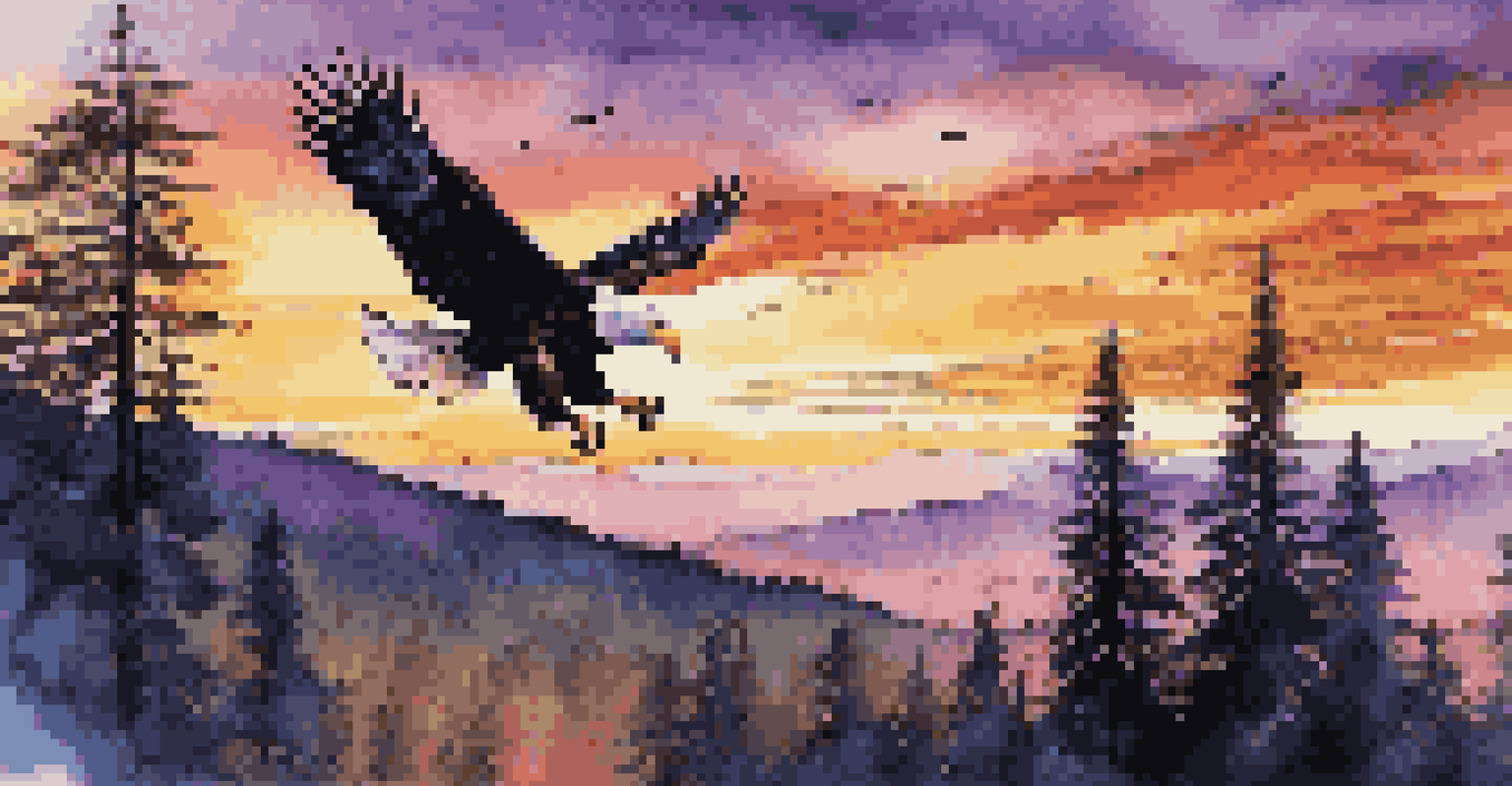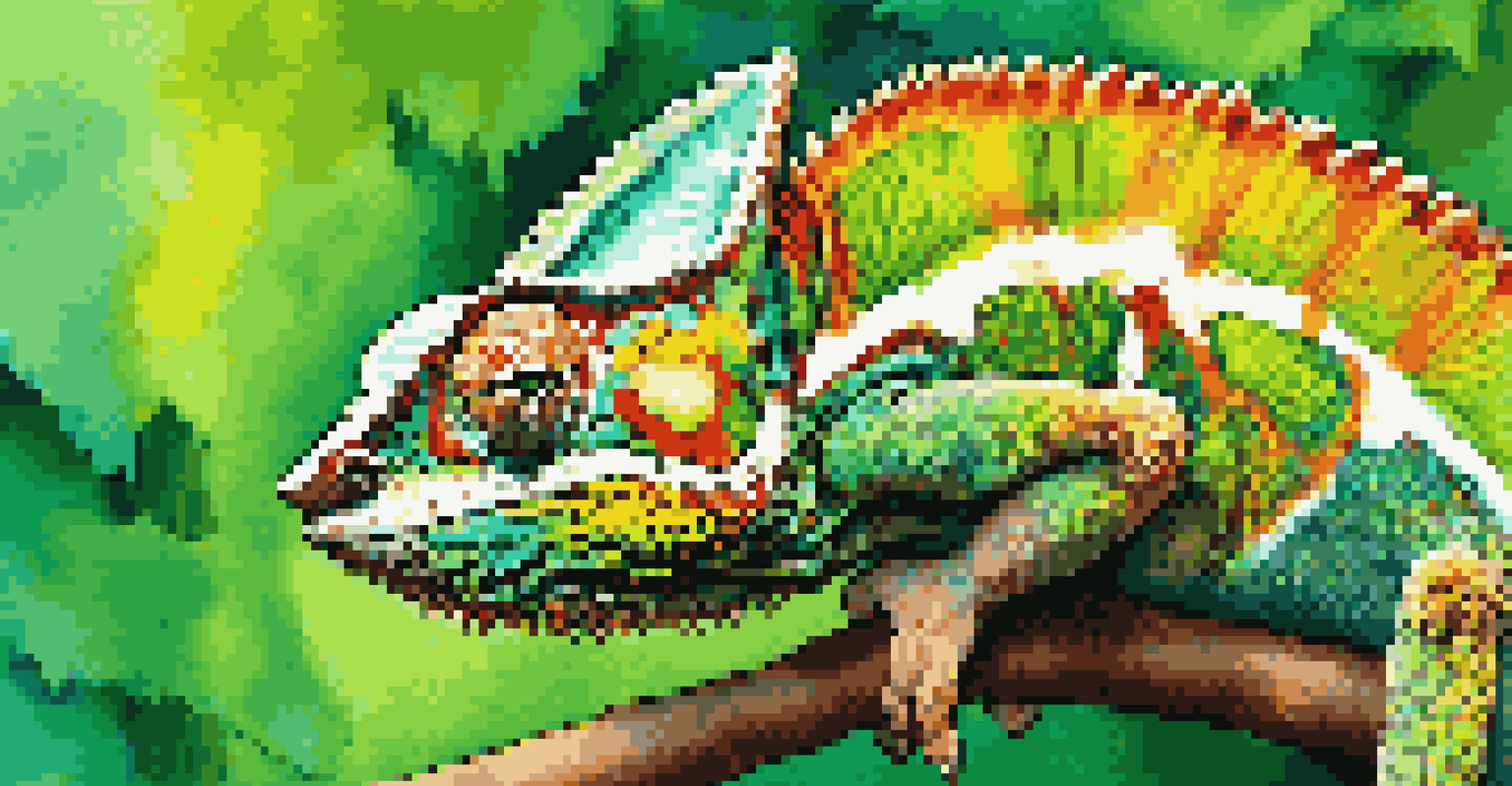Tips for Capturing Wildlife During Your Travels

Research Wildlife and Locations Before Your Trip
Before you embark on your journey, it's crucial to research the wildlife you hope to capture. Understanding the habits, habitats, and behaviors of various animals can significantly increase your chances of a successful shot. For instance, if you're aiming to photograph polar bears, knowing their migration patterns can guide you to the right place at the right time.
In every walk with nature, one receives far more than he seeks.
Additionally, familiarize yourself with the local environment. Each location has its unique challenges and opportunities, from lighting conditions to terrain. This knowledge can help you prepare your gear accordingly and choose the best time of day for your photography, such as early morning or late afternoon when animals are most active.
Lastly, consider reaching out to local wildlife photographers or guides. They often have invaluable insights about the best spots and times to observe wildlife, making your trip more productive and enjoyable.
Pack the Right Equipment for Wildlife Photography
When it comes to wildlife photography, having the right gear is essential. A DSLR or mirrorless camera with a telephoto lens allows you to capture distant subjects without disturbing them. Depending on the wildlife you're photographing, a lens with a focal length of at least 300mm is recommended for crisp and clear images.

Don't forget to bring extra batteries and memory cards, especially if you're in remote areas where access to charging or storage might be limited. Wildlife photography can be unpredictable, and you don't want to miss a once-in-a-lifetime shot because your battery died or your card filled up.
Research Wildlife Before Traveling
Understanding animal behavior and local environments can significantly enhance your photography experience.
Lastly, consider adding a tripod or monopod to your gear. These tools can help stabilize your camera, especially when using long lenses, resulting in sharper images and less fatigue during long photo sessions.
Practice Patience and Respect for Wildlife
Wildlife photography requires a great deal of patience. Animals often take their time to appear, so it's essential to remain quiet and still while waiting for the perfect moment. This not only increases your chances of capturing stunning images but also minimizes stress for the animals you are observing.
Photography is the story I fail to put into words.
Moreover, it's vital to respect the wildlife and their habitats. Maintain a safe distance and avoid any actions that might disturb them. For example, if you're photographing birds, staying at least 50 yards away can help protect their nesting sites and ensure they feel safe in their environment.
Finally, remember that it’s often the moments of stillness that yield the best results. Taking your time and observing the surroundings can lead to unexpected opportunities, revealing behaviors and interactions you might otherwise miss.
Utilize Natural Lighting for Best Results
Lighting plays a critical role in wildlife photography. Natural light can enhance the colors and textures of your subjects, making them stand out beautifully in your images. Early mornings and late afternoons, also known as the golden hours, provide soft, warm light that adds a magical quality to your photographs.
Avoid harsh midday sunlight, which can create unflattering shadows and wash out colors. If you find yourself shooting during this time, look for shaded areas or consider using a diffuser to soften the light. This can help maintain the vibrancy of your images while reducing glare.
Use Proper Equipment for Success
Having the right camera gear, including a telephoto lens and extra batteries, is crucial for capturing wildlife effectively.
Experimenting with backlighting can also produce stunning results. Capturing animals with the sun behind them creates a halo effect and emphasizes their outlines, offering a unique perspective that can elevate your wildlife photography.
Focus on Composition to Enhance Your Shots
Composition is key to creating compelling wildlife images. Using techniques such as the rule of thirds can help guide the viewer's eye and create a more dynamic photograph. Positioning your subject off-center often leads to a more engaging image than simply placing them in the middle.
Also, consider the background of your shot. A cluttered or distracting background can detract from your subject. Look for clean, simple backdrops that highlight the animal without competing for attention. Sometimes, changing your angle or position can help achieve a more pleasing composition.
Lastly, don’t hesitate to get creative with your framing. Capturing wildlife through natural frames, such as branches or foliage, can add depth and context to your images, making them more visually appealing and telling a story about the animal's environment.
Be Mindful of the Weather Conditions
Weather can significantly impact your wildlife photography experience. Overcast days often provide soft, diffused light that is perfect for capturing details without harsh shadows. Additionally, animals are often more active during cooler, cloudy weather, increasing your chances of sightings.
Conversely, bright and sunny conditions can create challenges, such as glare and high contrast. Being prepared for various weather scenarios is essential; bring rain covers for your gear and dress in layers to stay comfortable. A little rain can sometimes lead to beautiful, dramatic shots of wildlife in their natural habitat.
Post-Process for Stunning Images
Editing your wildlife photos can enhance their colors and details, transforming good shots into captivating works of art.
Moreover, don’t shy away from photographing in unique weather conditions. Snow, fog, or even storms can create a captivating atmosphere and add a storytelling element to your images, showcasing wildlife in a different light.
Post-Processing Techniques to Enhance Your Images
Once you've captured your wildlife photos, post-processing can take your images to the next level. Editing software like Adobe Lightroom or Photoshop allows you to enhance colors, correct exposure, and sharpen details. A little adjustment can transform a good photo into a stunning one.
Don't be afraid to experiment with different editing techniques, such as cropping for better composition or adjusting the contrast to add depth. However, it’s important to maintain the authenticity of the image, ensuring it accurately represents the wildlife and environment.

Finally, consider sharing your edited images on social media or photography platforms. Engaging with fellow wildlife photographers can provide valuable feedback and inspire you to improve your skills further, expanding your horizons as a wildlife photographer.